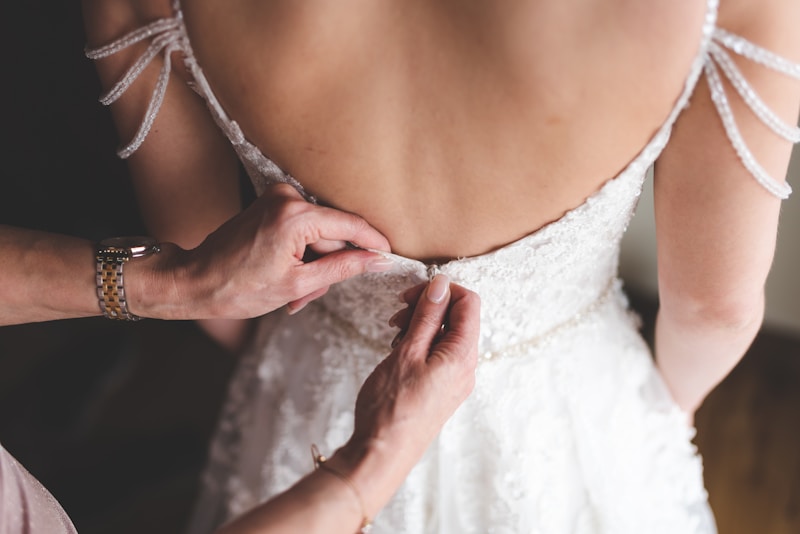Tailoring Mistakes to Avoid for Your Wedding Dress: A Comprehensive Guide
Tailoring Mistakes to Avoid for Your Wedding Dress: A Comprehensive Guide
Choosing the perfect wedding dress is one of the most significant decisions a bride will make as she prepares for her big day. However, even if you find the dress of your dreams, tailoring mistakes can turn this experience into a nightmare. This article aims to provide a detailed guide on the common tailoring mistakes to avoid, ensuring your wedding dress fits perfectly and makes you feel truly beautiful.
The Importance of Proper Tailoring
Before diving into the common tailoring mistakes, it's essential to understand why proper tailoring is crucial. A well-fitted wedding dress not only enhances your overall appearance but also boosts your confidence on your special day. A poorly fitted dress can lead to discomfort and distraction, pulling attention away from what should be a joyous celebration.
Common Tailoring Mistakes to Avoid
1. Ignoring the Timeline
One of the most critical mistakes brides make is not allowing enough time for tailoring. Depending on the complexity of the alterations required, you may need several fittings. Aim to start the tailoring process at least two to three months before your wedding date.
2. Skipping the First Fitting
Having a first fitting is crucial, even if you think the dress fits well. This fitting allows the tailor to identify any potential adjustments needed early on. Skipping it can lead to last-minute surprises and stress.
3. Not Communicating with Your Tailor
Effective communication is essential when it comes to tailoring. Be clear about your vision, preferences, and any concerns you have about the dress. A good tailor will appreciate your input and work with you to create the perfect fit.
4. Over-Altering the Dress
While it can be tempting to make significant alterations, avoid making drastic changes that could compromise the dress's design and structure. Minor adjustments can generally achieve the desired fit without altering the dress's essence.
5. Forgetting About Seam Allowance
When alterations are made, consider the seam allowance. A dress that is taken in too much can become uncomfortable and unflattering. Ensure your tailor leaves enough seam allowance for future adjustments, especially if your body shape changes leading up to the wedding.
| Common Tailoring Mistakes | Consequences | Solutions |
| Ignoring the Timeline | Last-minute alterations can lead to mistakes. | Start alterations 2-3 months before the wedding. |
| Skipping the First Fitting | Missed opportunities for adjustments. | Prioritize a first fitting for a detailed assessment. |
| Not Communicating with Your Tailor | Unsatisfactory results and possible frustration. | Clearly communicate designs and preferences. |
| Over-Altering the Dress | Loss of original design and discomfort. | Limit alterations to necessary changes only. |
| Forgetting About Seam Allowance | Ineffective fit over time. | Discuss seam allowance considerations with your tailor. |
Tips for a Successful Tailoring Experience
Here are additional tips to achieve a comfortable and stunning fit:
1. Bring the Right Underwear
When going for fittings, wear the lingerie you plan to use on your wedding day. This will give a better understanding of how the dress will fit with the undergarments. For instance, if you plan to wear shapewear, be sure to bring it along.
2. Schedule Multiple Fittings
Depending on the complexity of your dress's design, multiple fittings may be necessary. Don’t hesitate to ask for as many fittings as you need to ensure your dress looks flawless.
3. Take Reference Photos
Bring pictures of dresses you admire, so your tailor understands your style preferences better. These images can guide the adjustments towards your ideal vision.
4. Make Use of Fabric Swatches
If you’re making custom fabric selections, consider bringing fabric swatches to fittings. They can significantly affect the dress's overall look and feel,. For example, a heavy satin behaves differently than a lightweight chiffon.
5. Stick to Your Budget
Be upfront with your tailor about your budget for alterations. This transparency can help prevent overspending while still achieving your desired look. Tailoring costs can vary; therefore, knowing your limit allows for better planning.

Frequently Asked Questions
1. How much should wedding dress alterations cost?
Alteration costs can vary greatly depending on the complexity of the needed changes and the tailor's location. Typically, prices range from $150 to $500. Always discuss costs upfront.
2. When should I schedule my first fitting?
It's best to have your first fitting as soon as you have your dress, ideally three months before your wedding. This timeframe allows ample opportunity for adjustments.
3. Can I alter a dress I bought online?
Yes, dresses purchased online can be altered. In fact, many brides choose to do this. However, be mindful that some alterations might be more complex depending on the dress's construction.
4. Is it normal to have multiple fittings?
Yes, multiple fittings are quite common and often necessary to ensure a perfect fit. Don’t stress; this is an expected part of the process.
Conclusion
In conclusion, avoiding these common tailoring mistakes is essential for achieving the ideal brides' gown. Effective communication, planning, and an understanding of what alterations can and cannot be made will contribute to a seamless experience. Remember, your wedding dress should not only make you look beautiful but also feel comfortable as you celebrate one of the happiest days of your life. By following the tips and insights provided in this article, you can ensure that your wedding dress is tailored perfectly and turns heads on your special day. Happy planning!
